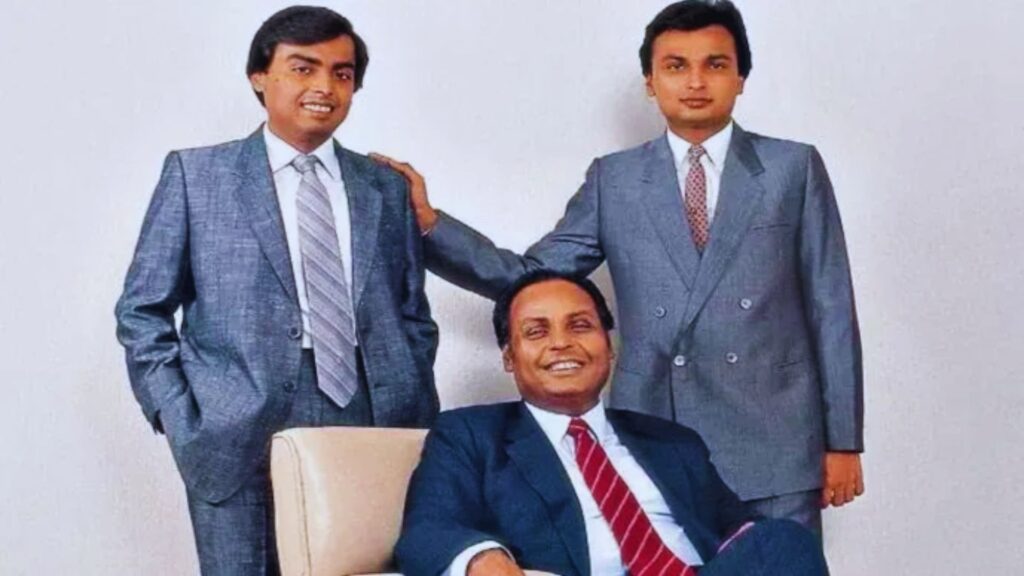Anil Ambani, the younger sibling of Mukesh Ambani, was once among the richest men in India. His rise, followed by a steep fall in wealth and influence, is a classic example of how fortunes in business can change swiftly. Born on June 4, 1959, in Mumbai, Anil is the son of Dhirubhai Ambani, founder of the Reliance Group, one of India’s largest business conglomerates. His journey from billionaire status to facing massive debt challenges is one of the most talked-about stories in India’s corporate world.

Early Life and Education
Anil Ambani grew up in a family that laid the foundation for one of the largest industrial empires in India. After completing his bachelor’s degree from the University of Mumbai, Anil pursued an MBA from the Wharton School of the University of Pennsylvania. Armed with strong academic credentials, he joined Reliance Industries, where he initially worked under his father and later alongside his elder brother, Mukesh.

The Split of Reliance Group
The turning point in Anil’s career came after the passing of his father, Dhirubhai Ambani, in 2002. Without a will, the division of the Reliance empire became a contentious issue. In 2005, their mother, Kokilaben Ambani, mediated a settlement that split the conglomerate between the two brothers. Anil took control of Reliance Communications (RCom), Reliance Infrastructure, Reliance Capital, and Reliance Power, while Mukesh retained control of Reliance Industries and its oil and gas ventures.
At first, Anil’s businesses flourished. Reliance Communications became a leading telecom operator, and Reliance Power’s IPO in 2008 was one of the largest in India’s history. Anil Ambani seemed to have the golden touch, rapidly expanding his business portfolio and becoming a global billionaire.
The Decline: Challenges in Telecom and Power Sectors
However, the tides turned against Anil Ambani in the early 2010s. His major investments in the telecom and power sectors faced significant hurdles. Reliance Communications, once one of India’s largest mobile operators, couldn’t keep up with the rapid technological changes and intense competition in the telecom market, especially after the entry of Mukesh Ambani’s Reliance Jio. RCom’s decline was swift, and by 2019, it filed for bankruptcy. q
Reliance Power also struggled to deliver on its promises. Many of the company’s power projects were delayed or faced operational difficulties. These failures began to affect Anil Ambani’s overall business portfolio, and his debt began to mount.
Legal Battles and Financial Struggles
Anil Ambani’s financial woes intensified over the years. He faced multiple legal challenges, including a high-profile case involving Ericsson, where he narrowly avoided a jail term after intervention by his brother Mukesh Ambani, who paid off his dues. In 2020, during a court hearing in the UK, Anil Ambani claimed that his net worth was “zero” and that he had no significant assets.
Anil Ambani Today
Today, Anil Ambani’s business empire has shrunk considerably. Despite his financial difficulties, he remains at the helm of several companies, including Reliance Infrastructure and Reliance Capital. However, his fortunes are a far cry from the billionaire status he once enjoyed.
While Anil Ambani’s rise and fall have been dramatic, his story is a powerful reminder of the volatile nature of business and finance. Once a formidable figure in Indian industry, he now faces a much humbler position, yet his legacy remains intertwined with the history of the Reliance empire.
Conclusion
Anil Ambani’s journey is one of highs and lows. From being a billionaire at the top of India’s business world to battling legal and financial troubles, his story reflects the unpredictable world of corporate fortunes.
Read more articles



